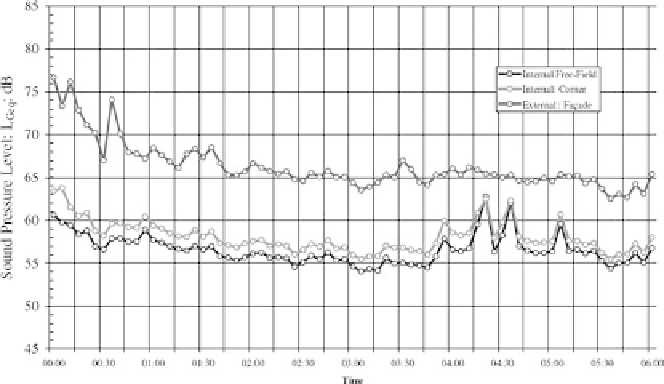Environmental Engineering Reference
In-Depth Information
Figure 10: Time history of measured sound pressure levels [ 15 ].
height), distance, air absorption, refl ection and absorption and weather effects
such as changes of wind speed and temperature with height.
Given the current situation diffi culties, a good idea to tackle with such a prob-
lem would be at a fi rst stage to use the anechoic chamber to remove background
noise and depending on the results, to employ measurement techniques and meth-
ods which enable characterisation of the noise emission from wind turbines at a
receptor location. The use of a vertical board mounted with a microphone sug-
gested in the document of IEA [16] recommended practices in case of such a
problem. The document recommends the use of a large vertical board with a
microphone at the designated position with its diaphragm fl ushed with the board
surface or to suppress wind induced noise on a microphone. Figure 11 shows the
background noise levels and the noise levels from a wind turbine in operation.
6 Abatement methods
In principle there are two ways to reduce noise: either make the source less noisy
or make the receiver more sound proof. The same principle can be applied to the
wind turbines when considered as noise sources.
Also if we think the factors that affect the noise propagation we can easily guess
a few measures we can take in order to control noise from wind turbines. More
specifi cally locating wind farms as far and as high as possible from residential
areas and improving the sound insulation in houses we can signifi cantly limit the
sound levels received by the human ears. Natural obstacles and vegetation can also
prevent noise from reaching people's homes.
A systematic and scientifi c consideration of all those factors along with real
time measurements leads to a study known as environmental impact assessment.
Such assessment is essential to evaluate the current environmental conditions at a

Search WWH ::

Custom Search